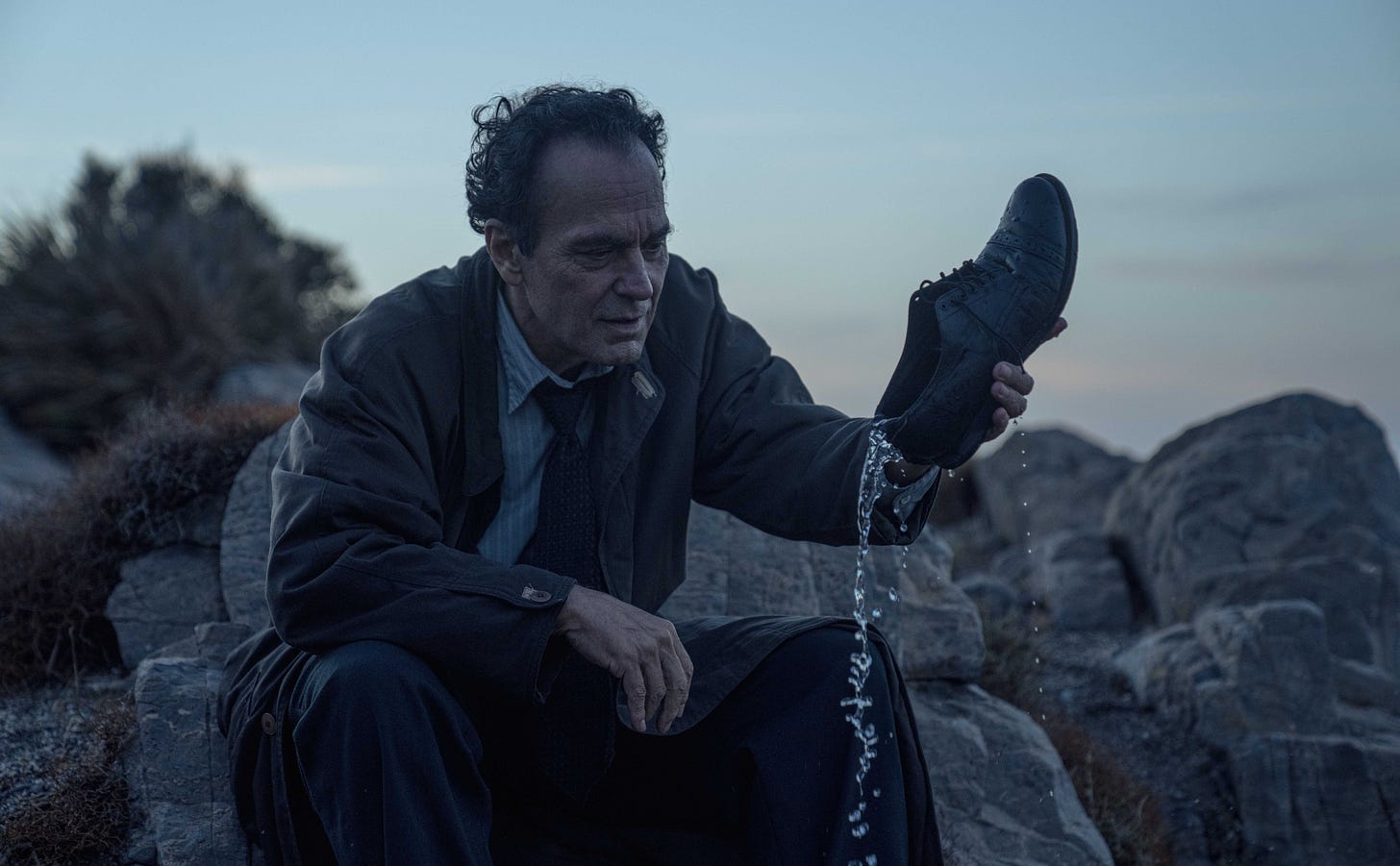SIFF #3: Close Your Eyes (Victor Erice, 2023)
Victor Erice’s fourth feature film in his illustrious 50 year career, Close Your Eyes, announces its anachronism at the outset. Opening on a verdant Spanish castle, Erice creates a seductive pastiche of late 20th century art films. Shot in beautiful 35mm, with fairy-tale lighting spilling through billowing curtains, we’re introduced to a king who hires a man to search for his estranged daughter, who has left Spain for Shanghai. As the man departs for his journey, we learn that we’ve been watching a film titled The Farewell Gaze, and that after this scene, the actor Julio Arenas walked off set and disappeared, ruining the production of the film and ending the budding career of its director Miguel Gueray.
Over 20 years later, in a digitally-shot 2012, Gueray is invited to Madrid to discuss Arenas’ disappearance on an Unsolved Mysteries reality show, kicking off one of cinema’s most defeatist missing person’s cases. After the initial disappearance, Gueray moved away from Madrid and upon his return, he’s met with his own fast approaching obsolescence. Many of his old friends have died, and his meetings with Max, a projectionist who has preserved two reels of The Farewell Gaze, Julio’s daughter Ana (Ana Torrent from The Spirit of The Beehive), and a former lover, Lola, constitute intimate but ultimately resigned scenes of recollection. The film’s essence is this palpable sense of time’s passage, found in Erice’s masterful silences, close ups, and the few flashes of his trademark amber lighting.
Close Your Eyes isn’t simply a film about aging. Part of the film’s grandiosity is that it mourns an entire 20th century culture and sensibility. Erice expresses this by showing how intimately Miguel’s life is linked with the history of cinema. The film is riddled with echoes to Erice’s own films (The Farewell Gaze is an inversion of El Sur, Ana Torrent’s entire presence, etc.), and nods to the Lumiere Brothers, Nicholas Ray, Howard Hawks, and an Carl Theodor Dreyer (a memorable line: “miracles haven’t existed in movies since Dreyer died”). In the process, Miguel’s life becomes a stand in for cinematic tradition. Naturally, the preservation and presentation of films becomes a topic unto itself. Max, who collects 35mm films, asks how many memory chips it would take to save his entire archive, and when Miguel tells Max that the opening sequence of The Farewell Gaze will be shown on TV, Max’s wonders if the show will respect the aspect ratio. Given this, the textural strangeness of Close Your Eyes, which combines classical narrative rhythms with harsh digital cinematography (complete with drone shots!), conveys the film’s temporal disconnect, its removal from celluloid a glaring estrangement from the film’s cinematic lineage.
It takes at least 90 minutes for the film’s plot to emerge, one which ostensibly subverts every art film about disappearance and coalesces the hard line between past and present into a single figure. As the film threatens to become Cinema Paradiso, the brisker pacing and gestures towards sentimentality become a devastating setup. The transcendent finale is a moment of confusion, a crushing recognition of inaccessible history.




